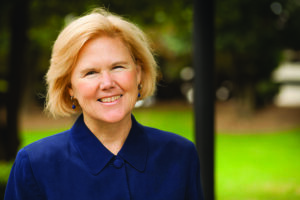 Driven by demand for elevated senior housing with integrated healthcare, newly formed nonprofit Kiawah Life Plan Village Inc. in Kiawah Island, S.C., purchased a 9-acre site.
Driven by demand for elevated senior housing with integrated healthcare, newly formed nonprofit Kiawah Life Plan Village Inc. in Kiawah Island, S.C., purchased a 9-acre site.
Here, the senior living organization is develop the first 62+ luxury continuing care retirement community (CCRC) on the island, scheduled to open in 2024.
Environments for Aging talked with Dana Speight Reed, principal and studio leader at architecture and interior design firm LS3P (Charleston, S.C.), about Seafields at Kiawah Island.
Here, Reed discusses designing the community to support aging in place thanks to an in-house medical clinic, operated by the Medical University of South Carolina (MUSC), and the project’s robust technology infrastructure.
How does the community integrate healthcare services onto the site?
Kiawah Island, once a predominantly seasonal community for vacationers, has become a year-round home for a growing population. Seafields at Kiawah will provide a continuum of care for seniors in a familiar, desirable location where social and support networks can be maintained and expanded.
However, to date, primary healthcare services are very limited on the island. By engaging with MUSC to create a first-of-its-kind in-house medical clinic, Seafields residents will have access to primary care physicians and medical specialists both via telehealth and direct on-site care.
What’s the biggest challenge to adding medical services in senior living?
It’s essential to right-size the clinic, level of care, and range of services with what can be supported economically. With limited healthcare services on the island, the clinic is able to deliver the highest level of care tailored to the residents of Seafields.
State-specific licensing and insurance requirements also could be an impediment. Here, the clinic is designed to meet the life safety and health standard criteria for adult ambulatory care due to the utilization by residents, including assisted living residents, and the types of services offered. MUSC Health also must obtain a local business license to operate.
How was a digital-first mindset adopted on this project?
Digital technology will be incorporated directly in community communications, service and support requests, security, wellness monitoring, and entertainment. Telehealth capabilities are integrated into the clinic and assisted living.
Digital infrastructure will be built into each unit, allowing residents to take advantage of smart devices to provide ever-increasing control over their home environment. This will include the ability to customize temperature, lighting, and sound controls.
What technology is on your radar for use in senior living going forward?
Advancing technologies such as artificial intelligence and robotics will streamline and make routine, utilitarian tasks such as housekeeping and deliveries more efficient. This will enable care providers to focus on interaction with residents.
For senior living environments—and all living environments—the design challenge is implementing new technology while creating environments that enhance and encourage human connection and community.









